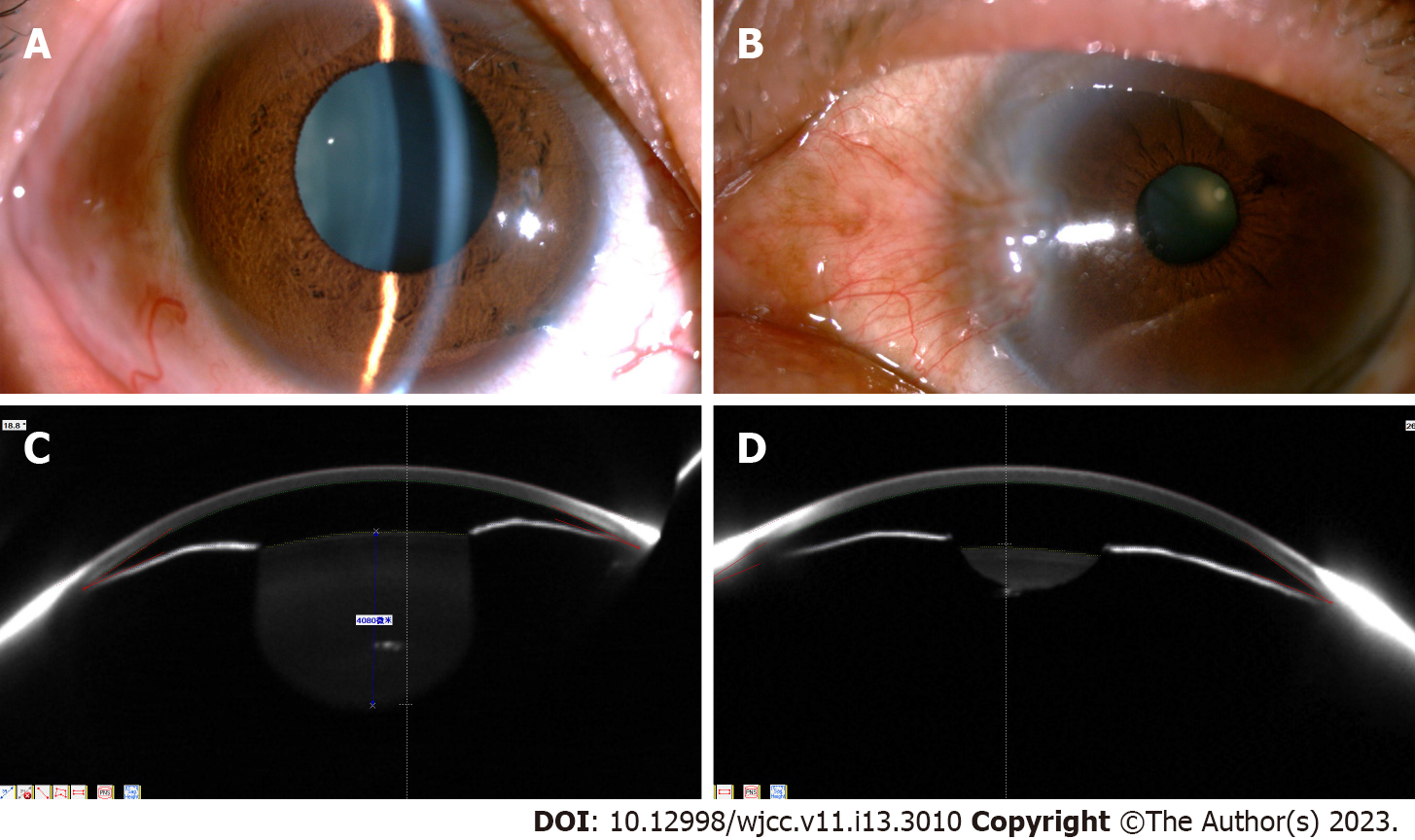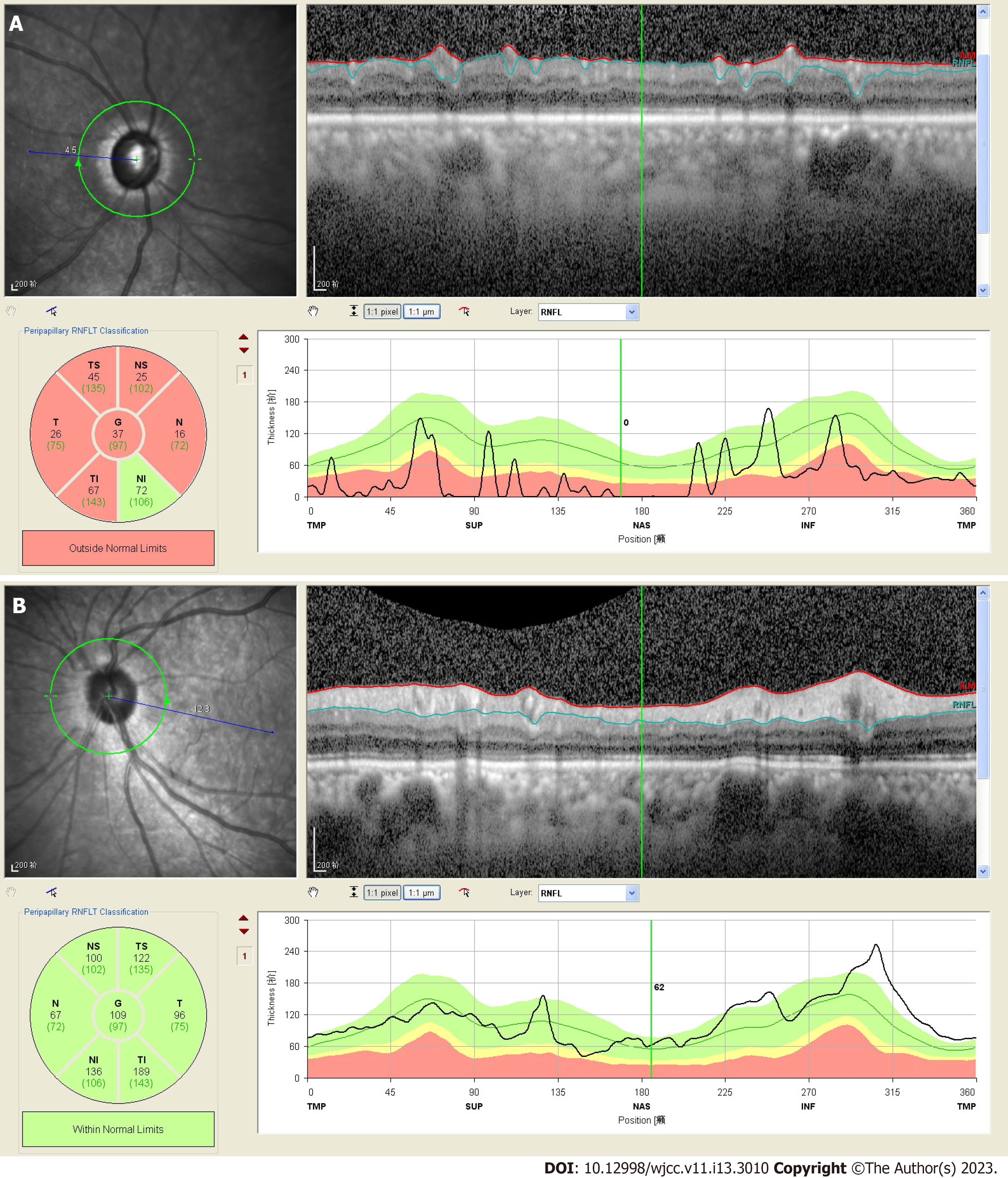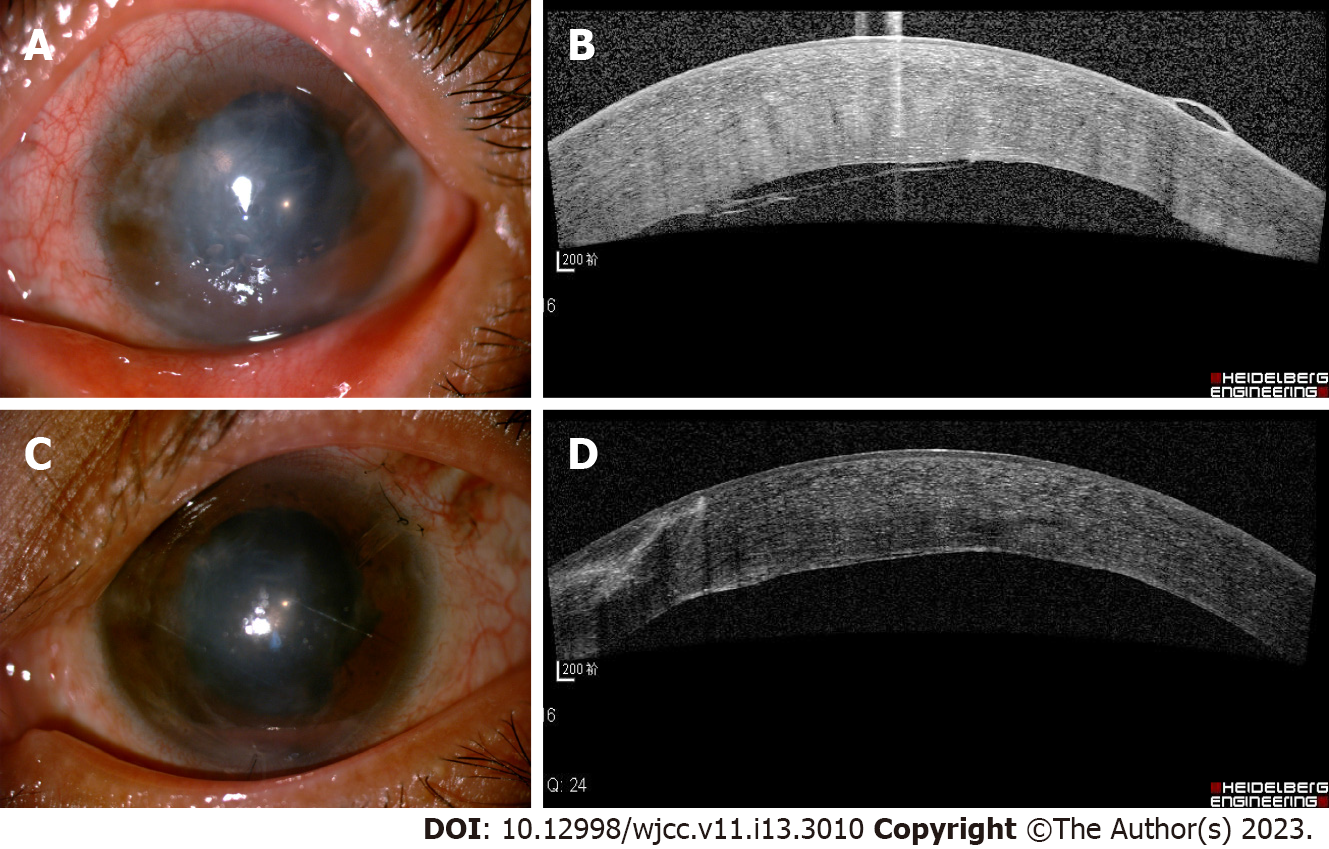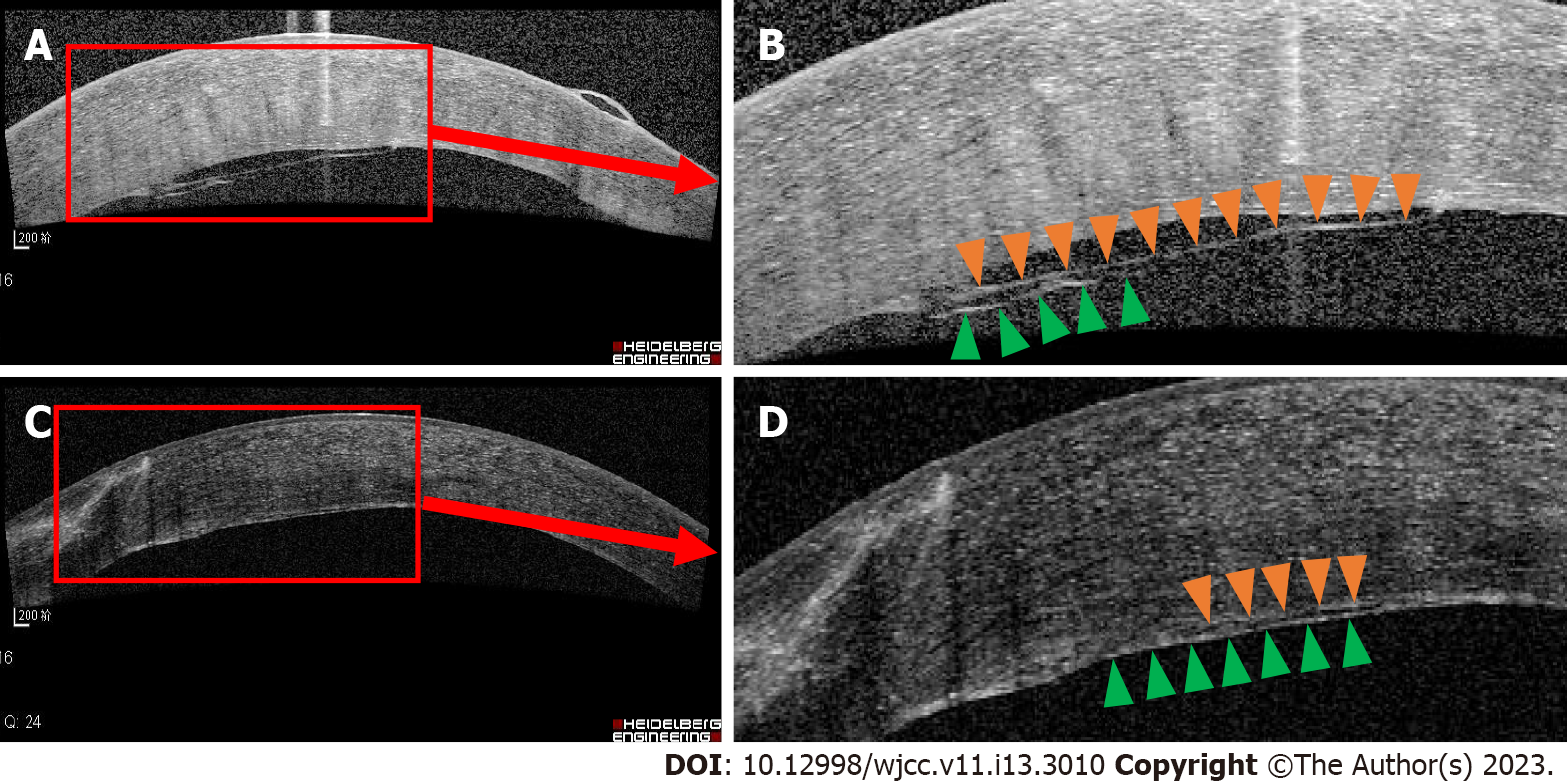Copyright
©The Author(s) 2023.
World J Clin Cases. May 6, 2023; 11(13): 3010-3016
Published online May 6, 2023. doi: 10.12998/wjcc.v11.i13.3010
Published online May 6, 2023. doi: 10.12998/wjcc.v11.i13.3010
Figure 1 Anterior segment photographs and pentacam analysis.
A and B: Bilateral corneas show transparency. Pupil diameter: OD 6.5 mm and OS 2.8 mm. The hole of iridotomy was marked by a black arrow; B: Different perspectives; C and D: Central and peripheral anterior chambers were shallow, and partial angle closure was present in both eyes.
Figure 2 Optical coherence tomography of the optic nerve head.
A: The retinal nerve fiber layer in various quadrants of the right eye appeared to have thinned; B: No apparent abnormalities were observed in the retinal nerve fiber layer of the left eye.
Figure 3 Anterior segment photography and optical coherence tomography of the left eye.
A: After peripheral iridectomy with zonulo-capsulo-hyaloidotomy and tension suture fixation, the anterior chamber was reconstructed. However, a significant corneal edema and bullous changes were seen; B: Optical coherence tomography showed that extensive corneal endothelial detachment involving approximately half of the cornea and a translucent membrane attached and stretched the endothelial layer; C: Two weeks after yttrium-aluminum-garnet laser, the corneal edema had abated, the corneal bullae had disappeared, and the peripheral cornea was transparent. D: Optical coherence tomography showed the corneal endothelial detachment gradually resolved. A highly reflective membranous mass attached to the medial endothelial layer.
Figure 4 Enlarged figure of corneal optical coherence tomography.
A and B: A corneal endothelial detachment (orange arrows) involving approximately half of the cornea and a translucent membrane (green arrows) attached and stretched the endothelial layer (orange arrows); B: Enlarged image; C and D: Two weeks after removal of the fibrous bundle, corneal endothelial detachment gradually disappeared. A highly reflective membranous mass (green arrows) was attached to the medial endothelial layer (orange arrows).
- Citation: Ma YB, Dang YL. Bilateral malignant glaucoma with bullous keratopathy: A case report. World J Clin Cases 2023; 11(13): 3010-3016
- URL: https://www.wjgnet.com/2307-8960/full/v11/i13/3010.htm
- DOI: https://dx.doi.org/10.12998/wjcc.v11.i13.3010












